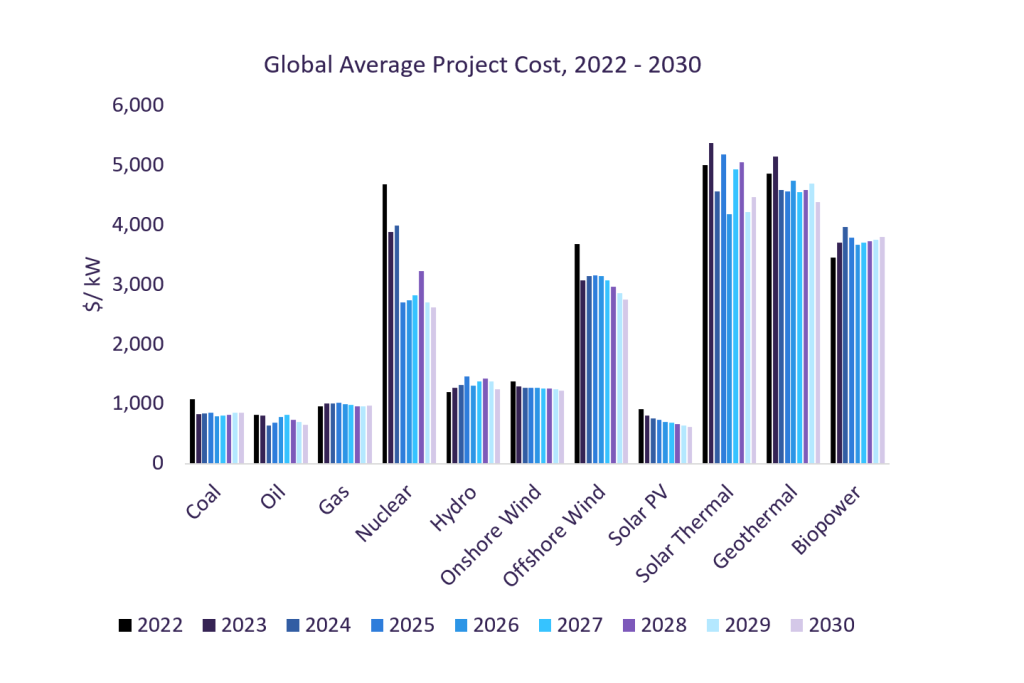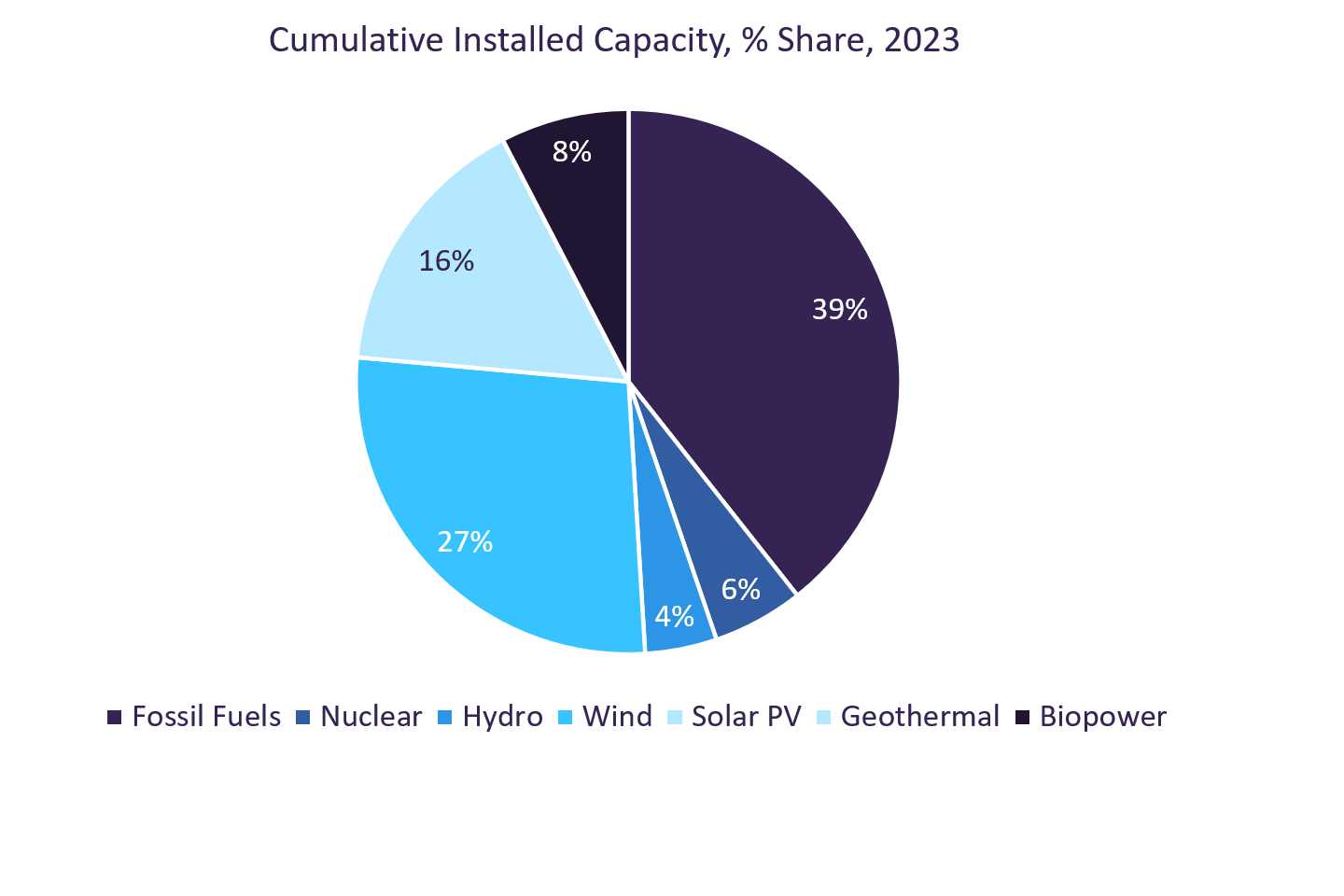Energy powers our daily lives, from the moment we switch on the lights in the morning to the time we charge our phones at night. As the enhanced greenhouse effect and energy security become increasingly urgent issues, the shift to green energy is more important than ever. The volatility of oil prices, especially due to the OPEC monopoly, underscores the need for reliable and sustainable energy sources. Renewable energy, particularly solar power, offers a solution to these challenges. Despite its promise, the adoption of solar technology faces multiple challenges. In this article, we will explore the current obstacles, the advancements in new types of solar cells and how they could transform the UK’s energy landscape.
Why solar?
Although recent hikes in interest rates have increased the price of building new energy projects, solar generation facilities offer some of the lowest project costs globally. Solar photovoltaic generation facilities have also been shown to be more economically efficient in the longer term than fossil fuel power plants.
Despite these advancements, several factors have hindered their adoption in the UK. This has resulted in solar PV accounting for 16% of power capacity in 2023 compared to 27% for wind, according to GlobalData. One major challenge has been the amount of land needed for solar farms, which often competes with agricultural usage. The new Energy Secretary, Ed Miliband, has approved three new solar farms, which were heavily critiqued by locals for misusing arable farmland. Alternatives have been proposed, such as floating solar farms on bodies of water, or the mass-introduction of solar cells onto the roofs of new-build houses.
The slow return on investment in the UK was also considered an issue. Solar cells work best when there is consistent sunlight incident upon the cell, however, the typical weather conditions in the UK offer lower average sunlight levels, thus reducing electrical output. Furthermore, the historical costs associated with the production of traditional silicon-based cells and the associated infrastructure, including energy or grid connections, was seen to elevate the cost of displacing existing thermal capacity with solar power.
Perovskite solar cells: a potential game-changer
However, a new line of solar cells shows promise. Perovskite solar cells have demonstrated high efficiency in converting sunlight into electricity, with consistent technological development causing their efficiency to grow year-on-year. Perovskites are also produced using less steps than silicon and are deposited onto the solar cell via a liquid solution. This streamlined manufacturing technique means they are considerably cheaper to purchase despite being as efficient as a traditional silicon cells. It is also possible to produce perovskite cells within the UK. Researchers at Swansea University have been working on scalable production methods, achieving the world’s first completely roll-to-roll printed perovskite cell, facilitating the UK insuring itself against any geopolitical developments. This is a significant advantage given that China alone currently accounts for over 80% of solar photovoltaic manufacturing.
These perovskite cells are also very flexible and can be used in a wider variety of applications than silicon. Combined with the low cost of production, localised applications such as individual panels for streetlamp lighting become more feasible with this technology.
Despite their potential, the commercial use of perovskites is hindered by one factor: durability. Perovskites can easily degrade due to environmental factors, such as exposure to UV over a prolonged period. Even in idealised conditions, a typical perovskite cell has a lifespan of 1-2 years compared to the 25-year lifespan of silicon. Ensuring the long-term durability of these cells is crucial for their commercial success.
The road to commercial viability
New start-ups like Oxford PV have already started building commercial factories, with plans for product sales by the end of 2024. The modules built by Oxford PV involve a multi-junction design, where perovskites and silicon are used in tandem with one another to absorb a broader spectrum of light, allowing for record high efficiencies. The environmental impact of this tandem cell has been shown to be 6-18% less than a typical silicon module over a 25-year lifetime.
However, experts suggest that perovskites will not be mainstream until 2035. This is due to several reasons. New techniques to resolve individual degradation pathways have been proposed, such as introducing polymers to protect the perovskite against ultraviolet light or using hydrophobic interlayers to prevent moisture buildup, however a cell architecture which can combine these techniques needs to be found before perovskite cells can commercially thrive.
The scaling-up process for commercial production also requires significant investment and time. The transition from lab-based production to mass market involves several technical and economic hurdles, with certification processes being notably lengthy, delaying adoption.
Analysis from the Climate Change Committee shows that the UK will need to achieve at least 40GW through solar generation capacity by 2030. This compares to 17.4GW of solar capacity in 2023 according to GlobalData. Although solar’s capacity contribution will grow organically, it is unlikely that this target will be reached without government intervention. The new Labour government has promised to “work with the private sector to double onshore wind, triple solar power, and quadruple offshore wind by 2030.” If Labour can fulfil their promises, the prospects of solar reaching its required capacity will improve. Although perovskite cells show great potential, their durability issues prevent them from being a viable option for immediate use. In the near term, a pragmatic approach would involve using silicon cells, with a gradual transition to perovskite cells as we approach 2050. Achieving the net zero target through solar technologies is dependent on supportive governmental policies. If implemented effectively, solar could secure a low-carbon energy future for the UK.





